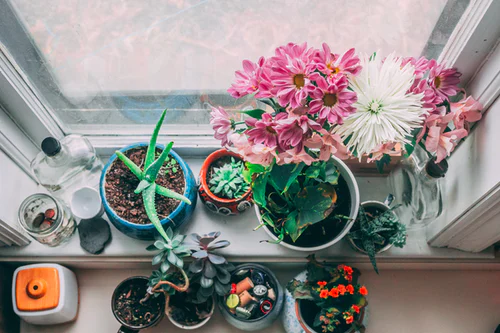It’s thought that part of the pleasure of living with indoor plants stems from their low maintenance requirements. A simple potted cactus can provide just as much enjoyment as a conservatory full of demanding tropical plants. Your indoor greenery will most likely reach you when you are least expecting it—given as gifts or catching your eye while strolling through a local market.
It’s essential to learn how to care for and maintain succulents, whether given a peace lily plant or bought a Syngonium at the supermarket. Learn how to keep your plants happy and safe by reading non.
Tips Succulent Care And Maintenance
Succulents can be challenging to grow indoors. On the other hand, these expert tips can help you better care for your succulent indoor set.
Provide As Much Light As Possible
It’s difficult for succulents to get enough sunshine when they’re kept indoors. They need about 6 hours of clear, indirect sunlight a day while they are outside. Indoors, however, you’ll want to put your succulents near a window that gets plenty of light during the day. Place your succulents near the brightest window or brightest region of your home or office if this isn’t an option.
Use The Correct Soil
The suitable potting soil will make all the difference, whether you’re taking a succulent home from a nursery or growing your own. When planting in the garden, make sure the area drains well and isn’t in a muddy, low position. You can buy cactus soil or add sand, gravel, or volcanic rock to your potting soil to improve drainage for container planting. You should place a layer of crushed rock on the bottom of your container before putting it in your planting medium if the container you’re planting it in doesn’t have a drainage hole. Gravel or tiny pebbles sprinkled on top of the soil will add a lot of visual interest. Perlite and pumice can also be added to specific potting mixes to improve aeration.

Potting Succulents
If you purchased your succulents from a nursery or an online shop, the first thing you can do is repot them as soon as possible. The reason for this is that most succulents come in small plastic pots with highly porous planting soil. Succulents do not grow in wet soil, so a drainage hole is essential. The best pots for succulents should draw water from the soil, be breathable, and avoid water from accumulating. You’ll want to transplant them to larger terra cotta containers with drainage holes and cover them with quick-drying dirt.
Check Them Regularly For Pests
Pests can infest succulents as well. Mealybugs and spider mites are the two most common forms. Since these pests are tiny and live in difficult-to-find spaces, getting rid of them from your plants can be difficult. This means your houseplant can have pests for a long time before you find anything unusual. That is why it is essential to check your succulents regularly.
If your plant is infested with the pests mentioned above, follow these steps:
- Mealybugs: dab your succulent with a cotton bud soaked in denatured alcohol. Since alcohol will not harm your plant, use it often to get rid of the bugs. Using chemicals like Imidacloprid instead. When watering your plant every few months, mix it in.
- Spider mites: invest in a decent miticide and carefully follow the instructions.
Reconsider Propagation
Plant propagation is the process of creating a new plant element from an existing one. The succulent is the factor in this case. These plants can be propagated in four different ways:
- Leaf cuttings
- Offsets
- Stem cuttings
- Seeds from a mature plant
Regardless of the approach you use, you should be able to get an excellent selection of new plants that you can use to start a more extensive garden for yourself, give away to friends, or sell for a profit.
Feed Them Properly
Fertilizer is needed in addition to watering, soil, and light for succulents. In most cases, feeding succulents should be done only once a year. Too much fertilizer weakens succulent plants, and any additional growth would likely be weak and spindly, promoting the dreaded etiolation that everyone wants to stop.
Other experts explain that nurseries feed their plants with every watering during the growing season, using a technique known as fertigation. A small amount of food is mixed into the watering system. Others suggest a monthly feeding schedule.
Succulents have many benefits, both indoors and outdoors. They brighten the room, are pleasing to the eye, and add positive energy to your workplace. However, if your indoor plant isn’t near a window, the leaves might have begun to wither. You will extend the life of your succulent by following the above care and maintenance instructions.


